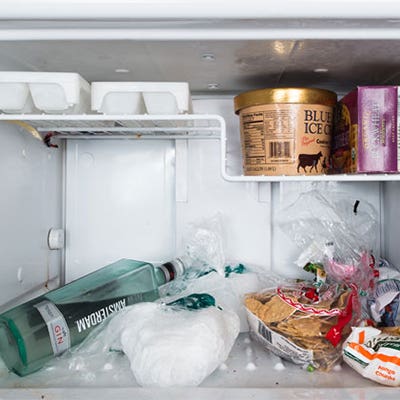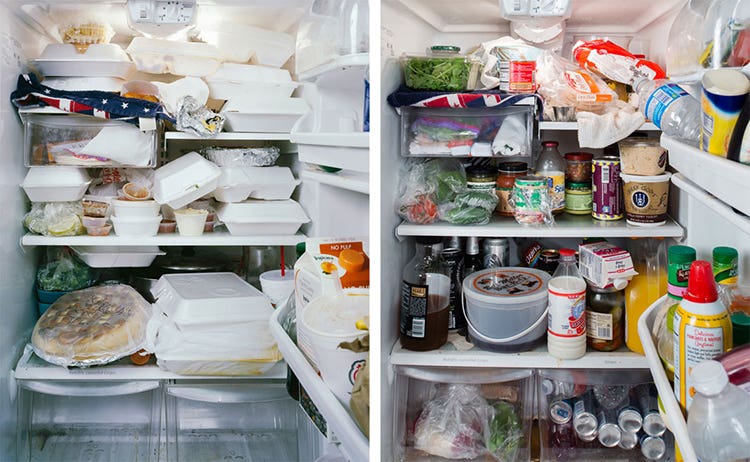
Weekend Reading: Fridge Portraits, Waffle House, and More
What we’re reading, cooking, and clicking this week

• What does the inside of your refrigerator say about you? Jordan G. Teicher writes for Slate about photographer Mark Menjivar's series of fridge portraits, taken in 20 communities around the United States, in some cases returning to the same person's refrigerator to shoot it again four years after his first visit. These time-lapse images are particularly compelling: a documentary filmmaker's fridge in 2008 is full of beer cans and condiments; four years later, it's a barer fridge, but the basic elements—wine, vermouth, and yogurt now—hold steady. A midwife's 2008 fridge is devoted to locally grown produce; four years later, the same person, now a business consultant, has a fridge chock-a-block with packaged food. The full series, on Menjivar's website, also shows one-off images—the bare shelves of a street advertiser on a $432 fixed monthly income; the freezer of a short-order cook with a snake coiled on an upper shelf. The series is strange, surprising, and startlingly intimate: I couldn't stop clicking through them. —Karen Shimizu
• Nothing makes editors happier than good writing. When journalism student Jessica Contrera published her remarkable, moving essay in Indiana Daily Student about the closing of a Waffle House in Bloomington, dozens of excited food editors shared the reporter's work on Twitter, thrilled to read a story from a writer with who understands the best food journalism isn't really about food, but people. Contrera zooms in on the diner's 79-year-old owner, the waitress who'd been slinging chicken sandwiches and French toast for the last 24 years, and the cast of characters that regularly filled its scuffed booths. It's through them that Contrera shows us this Waffle House was truly special, because it was special to them. —Tejal Rao
• Monday marked the end of Israel's first Polish Culinary Week and the Order of the Knights of the Kishke, a "secret society of lovers of Polish-Jewish cuisine." The order's founder, Yossi Vardi, hosted a dinner at Sender in Jaffa to celebrate the recipes of generations past. Ofer Aderet of the Haaretz describes the evening, which honored Polish cooks like Vardi's grandmother, who "could turn any organic thing into chopped liver, and always obeyed another rule of the Polish kitchen: to conceal all enigmatic ingredients." As a lover of pickled fish in jelly myself I am hopeful for a chapter of the Knights of Kishke to form here in New York; their motto is "Kishke is like the Internet—a wide tube filled with unknown but addictive things that destroy your health." I'm into it. —Nyanyika Banda
• I'm in Charleston, South Carolina this weekend for the Sony Imaging Edge food photography workshop, and I've been spending my downtime reading about classic Lowcountry foods, like this history of boiled peanuts that I stumbled across in the Charleston City Paper. Facts gleaned: They have their origin (like so many other Southern foods) in Africa, and though regarded with suspicion outside of the South ("why would you want to eat a damp peanut?" a friend once asked me), were once quite popular as wedding snacks. —Laura Sant
Keep Reading
Continue to Next Story










